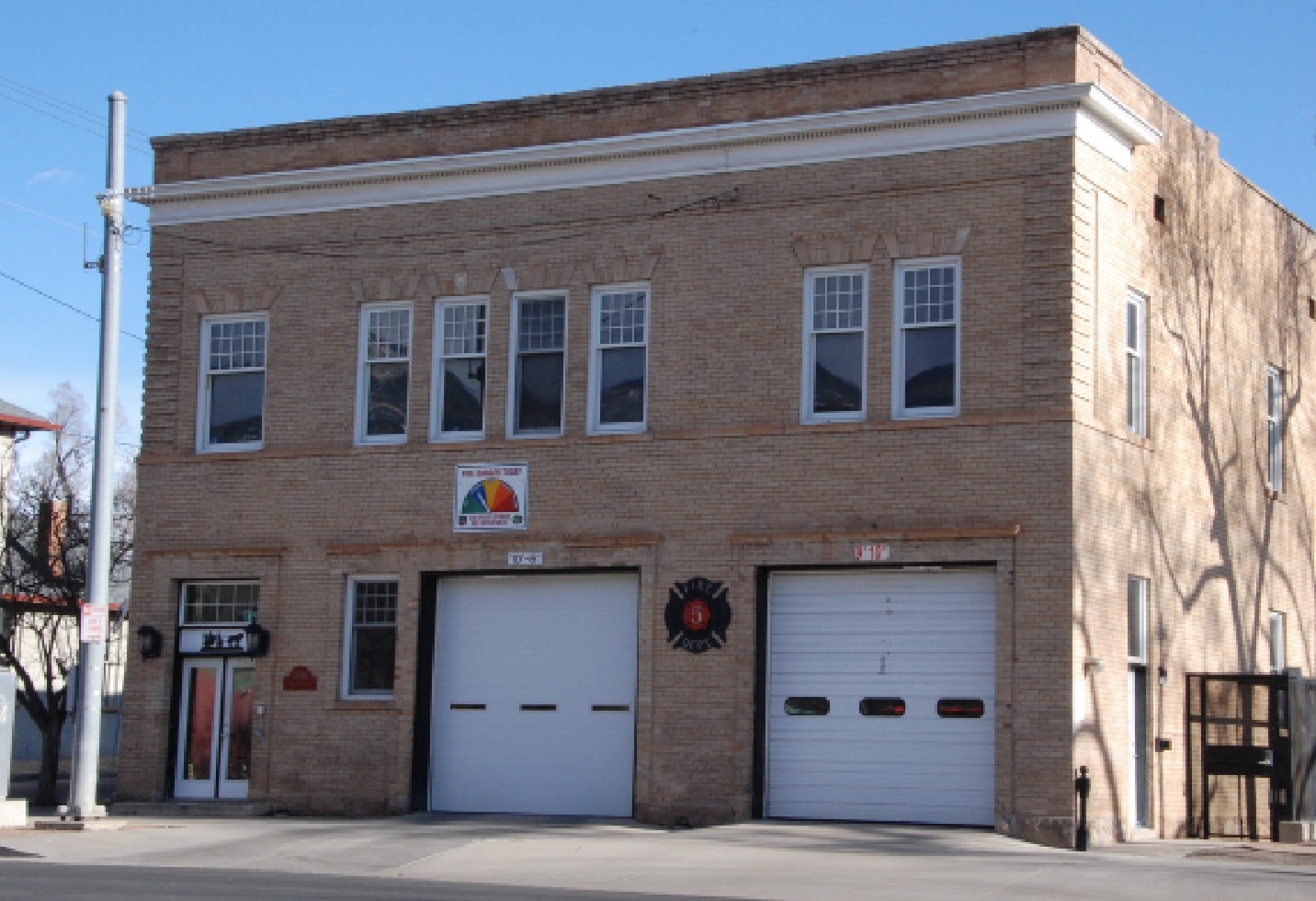After Colorado Springs annexed Colorado City in 1917, it soon became clear that the existing fire station needed substantial repairs, estimated in 1919 to cost more than $6,000. The City Council decided that it made sense to buy a nearby building at the northeast corner of 29th Street and Colorado Avenue and convert it to a spacious, modern fire station.
The city paid $4,000 for the building, which had served as the clubhouse for employees of the defunct Standard Mill. The city estimated that it would cost about $1,600 to convert, but even after multiple bids and much haggling by the city, the final cost came to $5,500, plus $1,330 for new plumbing.
Apparently, the city hadn’t realized that the apparatus floor (which had been a bowling alley) would have to be completely rebuilt to bear the weight of the fire trucks.
Fire Station 5 officially opened 123 years ago, on Feb. 22, 1921; today, its coverage area includes Gold Hill Mesa, Old Colorado City and Pleasant Valley.
The 10-year-old fire truck had a Knox chassis and a combination chemical tank and hose body built by the Fire Extinguisher Co. of Chicago. It had a 60-horsepower engine, and roared along at 60 miles per hour.
City Fire Chief Patrick “Patsy” McCartin clearly loved speedy machinery. In 1914, the Colorado Springs Fire Department provided the chief with a red Stutz Bearcat, that era’s equivalent of a red Ferrari.
In 1921, McCartin got a new Templar roadster and turned over the Stutz to the assistant chief. Alas, the Stutz was about done, so it was parked and finally junked in 1927. Maybe not the best of decisions, given that a 1914 4E Stutz Bearcat recently sold for $2.9 million.
A new threat was emerging: the wildland urban interface
But Patsy, his firefighters and their successors had plenty to do in the next 103 years. The CSFD was completely motorized, having long since sold the powerful steeds (including Patsy, a 1,190-pound horse named after Chief McCartin) that once powered fire apparatuses throughout the city.

And although firefighters in the decades after Fire Station 5 was constructed had plenty of urban fires to extinguish, a new threat was emerging: the wildland urban interface (WUI). As the city and its military facilities expanded, once-remote mountain forests and ranchland abutted fire-prone developed areas.
In our times, such wildland fires have been particularly dangerous in the summer months, but the city’s deadliest wildfire started Jan. 19, 1950, near The Broadmoor’s new golf course where brush was being cleared.
Driven by 70 mph winds, the fire ran five miles east toward Camp Carson, where unprepared soldiers and volunteers tried to stop the blaze. Nine men died, many more were injured and 92 buildings on the base were destroyed.
But decades would pass before WUI fires would come to eclipse fierce structural fires. As well as traditional firefighting, Fire Station 5 personnel came to specialize in high-angle rescues, as inexperienced climbers got stuck in the Garden of the Gods or other steep terrain. Grass and timber fires were also targeted.
Firefighters shared part of the second floor building with community nonprofits until the mid-1980s.
One significant fire on June 18, 1990, destroyed the historic Old Colorado City Fire Station and City Hall at 115 S. 26th St.
“The fire started in the heater for a hot tub (in a second-floor apartment),” Les Williams wrote in “Fighting Fire in Colorado Springs,” “and quickly spread throughout the building. Sadly, the Firemen’s Protective Association had been negotiating to purchase the building for a Fire Museum.”
The building may be old, but the equipment is modern. Engine 5 is a 2008 Spartan Advantage 4×4 Rosenbauer Central with a 1,500 gallons-per-minute pump and 500-gallon water tank. The Brush Truck is a 2017 Ford F-550 4×4 XL Super Duty with a Weather Guard Type 6 300 gallon water tank.

And old as the building may be, its interior is reputed to be comfortable and friendly (the CSFD refused to admit anyone to confirm this). Situated in the heart of OCC, it’s not as sterile and isolated as some of the other 23 stations.
And for Westside and OCC residents, it’s a comforting sight, as is Fire Station 3 at 922 W. Colorado Ave. Ours is a neighborhood with thousands of 19th and early 20th century frame houses, and we’re all acutely aware of fire danger.
So, how can we protect ourselves from fire? Writing in the early 1990s, Les Williams had a simple suggestion: install sprinklers, which he estimated would control 97 percent of fires.
But since vast 21st century conflagrations like the Hayman Fire, the Black Forest Fire and the Waldo Canyon Fire, WUI fires have shifted public and professional attention away from structural fires. The Waldo Canyon Fire left two people dead, destroyed 346 homes and burned more than 18,000 acres in the Pike National Forest and in Colorado Springs.
Sprinklers are no match for pyrocumulus clouds, so the city, county, state and nation have worked together to fireproof the wildland urban interface for many years.
Will they succeed? After the Marshall Fire in December 2021, when grass fires driven by 115 mph winds wiped out more than 1,000 structures in the Boulder suburbs of Louisville and Superior in a few hours, it seems likely that catastrophic fires will be with us for many years to come.
So remember the ancient Boy Scout motto: Be Prepared!
